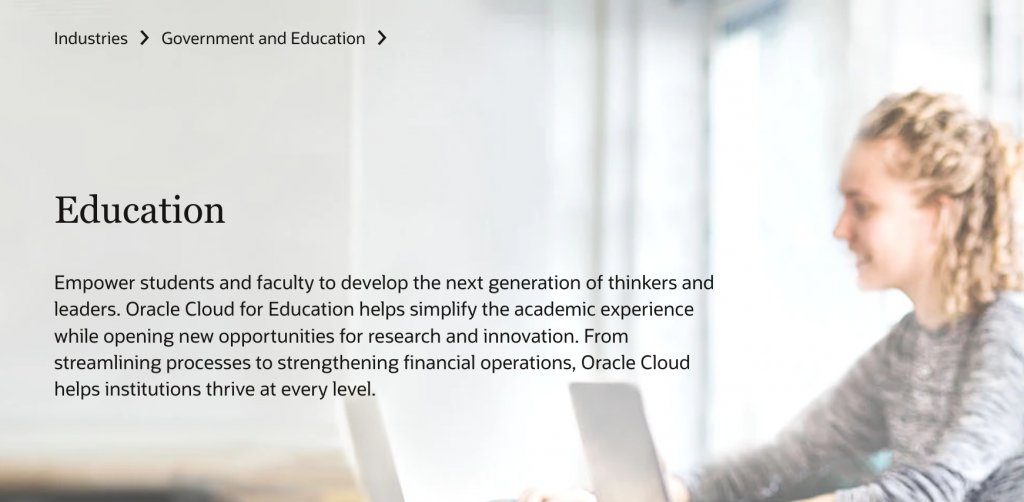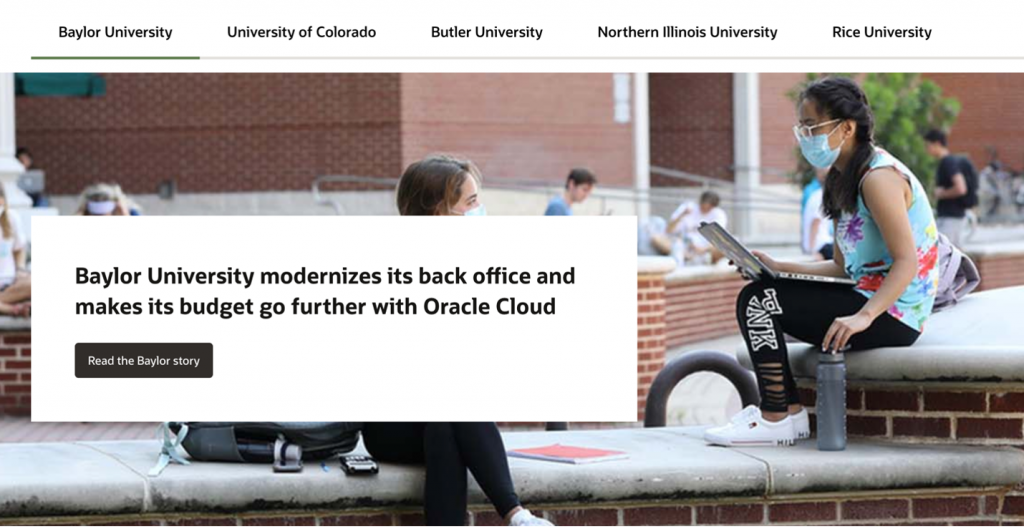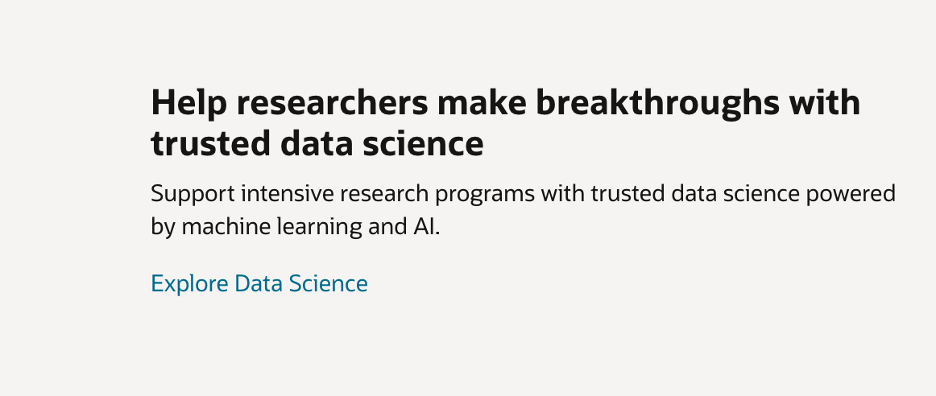As part of a massive overhaul of its industry-specific landing pages, to ensure each one provided a clear and simple user experience while also meeting Oracle’s voice and tone standards. Working closely with subject matter experts, I not only edited, rewrote and provided guidance for copy, but advocated for users by ensuring all links and CTAs created a cohesive journey that met their expectations at every step of the way. The following is an in-depth look at one of the more than 10 landing pages I edited and reviewed.
Before:
After:


The Before focuses on the more granular benefits Oracle’s solutions provide. It’s a bit jargon heavy and the laundry list of benefits at the end puts too much cognitive load on the user. The Before copy also positions Oracle as the hero and our audience as a secondary character. The After is more conversational and aspirational, offering a glimpse at the higher level benefits of student success that are more in line with our customers’ broader missions. The focus shifts to the customers’ needs, wants and pain points, making them main character while Oracle plays a vital supporting role helping institutions meet their biggest challenges and loftiest goals.
Before:
After:


The Before copy is extremely generic and doesn’t offer much incentive for users to read more. It’s unclear what kind of software we’re referencing, how it relates to student experiences and why any of it matters. It also centers the story around Oracle, rather than making our customers the hero of their own stories. The After offers a clearer narrative that helps users understand what services and products Oracle provided and how they directly benefited the university. Users will now have enough information and context to understand if this article is relevant to them and have a sense of what they’ll learn when they click on the CTA.
Before:
After:


In the Before, the copy isn’t very tailored to our audience, it could apply to any industry or job. The After adjusts the copy to be more specific and relevant to higher education where top candidates are leaders in their fields and career growth (getting published, achieving tenure etc) is a huge motivator for hiring and retention.
Before:
After:


The Before headline is a bit too generic–while “dreaming big” sounds like a positive benefit, it’s unclear what that actually means and what the outcome of “dreaming big” looks like. The thought in the Before body copy is a good one, but it might feel like an oversell, especially to top universities who feel like their reputations are already well-established. The headline in the After grounds the idea of “dreaming big” in reality and offers a clear example of what “dreaming big” can achieve. The body copy is a bit softer than in the Before and removes any suggestion that Oracle is the main reason for our customers’ success. A stronger emphasis on research makes the After copy more relevant to our customers and puts them in the hero role with Oracle once again playing an important supporting role.
Before:
After:


The Before feels like a bulleted list that’s been turned into a sentence and places too much cognitive load on users. The After offers a more conversational tone with less jargon.
Click to enlarge

